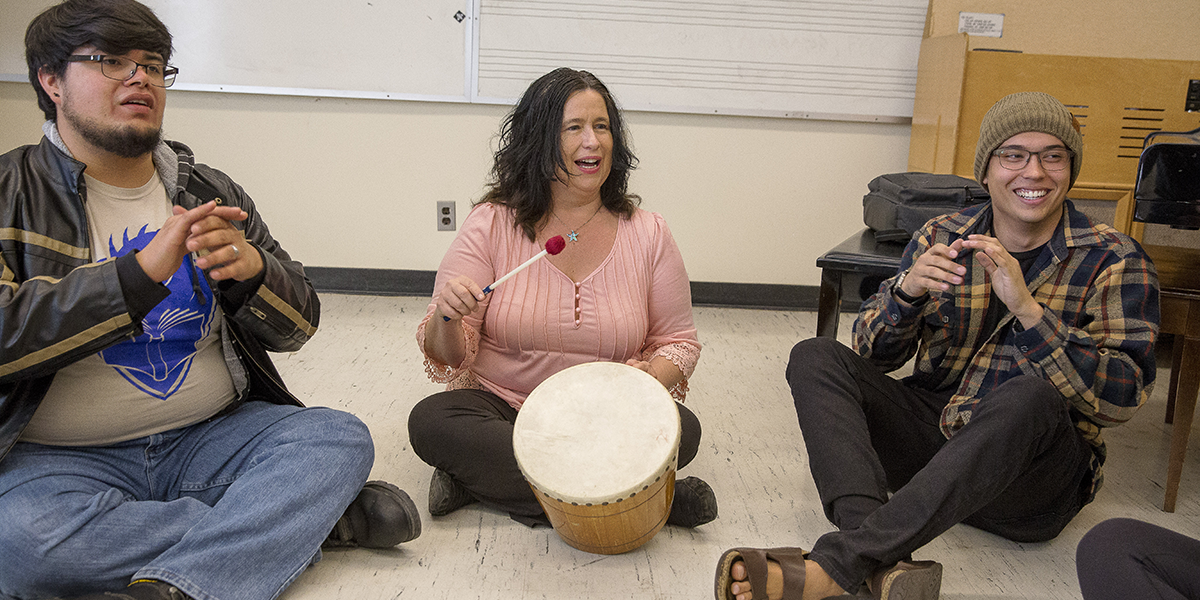
San Francisco State University Professor of Music Education Wendell Hanna was one of five California State University (CSU) faculty members to receive a seed grant from the Gary and Mary West Foundation late last year to advance palliative care research and education. Hanna, who teaches music education, is using the funds to develop a music and movement therapy program for patients in hospice care.
Hanna has long been interested in the intersection of music and medicine, and her project is part of the Institute for Palliative Care, a CSU-wide effort to ensure California is meeting the medical needs of its aging population. The project explores the benefits of combining music with soothing exercises for people in hospice care who are bedridden, wheelchair-bound or ambulatory.
“Music is so important for people who are suffering or in pain,” she said. “You can only do so much about physical pain, but there’s also emotional pain and spiritual pain. Music can really help with that.”
In the 1970s, Hanna’s father Thomas developed a movement technique called Hanna Somatics — gentle exercises that involve small contractions of muscle groups that get chronically tight or sore. Through the repetition of these contractions, people find a lot of physical relief, Hanna says. Her ultimate vision is to develop three series of somatic movements targeted at different muscle groups all synchronized to music.
According to Hanna, the body naturally synchronizes to externally perceived rhythm, a concept called entrainment. Simply put, when people hear music their bodies automatically move to the beat. “It’s a basic human impulse everyone has, regardless of age or background. Using entrainment with these exercises should help with the execution of the movements,” Hanna said.
Because the music has to resonate with the patients, Hanna researched the average age of people in hospice care, which is around 80. Previous studies have shown that people are most motivated by the music they heard between the ages of 15 and 25, so Hanna performed a simple calculation and found the majority of people in hospice care would respond best to music from the 1950s. So she paired music from that period, mostly torch songs and ballads, with the exercises.
The next step in the project is training caregivers at local VITAS Healthcare centers, a nationwide hospice and palliative care network, in the choreographed movements. She expects to do three training sessions with about 15 nurses and physical therapists per session. Hanna plans to follow up with interviews with health care workers to determine how patients benefitted from the treatment. She will present her findings at the next CSU Palliative Care Symposium in October.
Working with older adults is a departure for Hanna, who spent most of her career teaching and researching infants, toddlers and preschool and elementary school-aged children. Last year, she published the book, The Children’s Music Studio: A Reggio-inspired Approach, which was the culmination of years of scholarly work in the area of early childhood music education.
—Jamie Oppenheim
Links
- Gary and Mary West Foundation
- CSU Institute for Palliative Care
- The Children’s Music Studio: A Reggio-inspired Approach
- Wendell Hanna
Photo: Wendell Hanna instructs students in her music education class. Photo by Paul Asper.